Halloween Advent Calendar 2014: Estate Jewelry
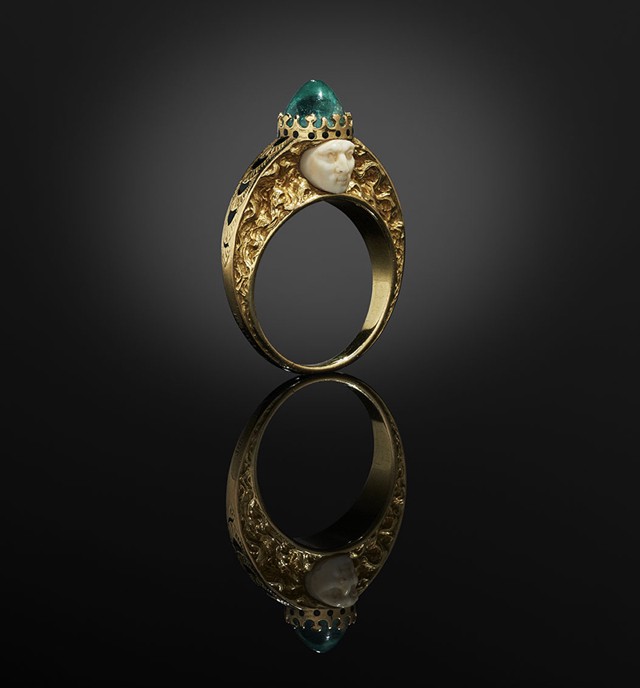
This ring, created by the great Art Nouveau designer René Lalique, was obviously commissioned by a sorcerer who would wear it while poring over alchemical manuscripts from the library of Dr. Dee. It’s exquisite, of course, but also stupendously creepy. (Note: the Wartski site does not link to pieces directly, so click on “Jewellery” and scroll down.)
Featuring a central carved ivory face set in yellow gold and crowned with a cabochon emerald, the ring showcases the quality of workmanship so typical of Lalique jewels. Long, flowing hair of deeply engraved gold forms the shoulders of the ring, contrasting with the more formal engraved leaf patterns that run along the tops of the shoulders. Small accents of black enamel provide further contrast.
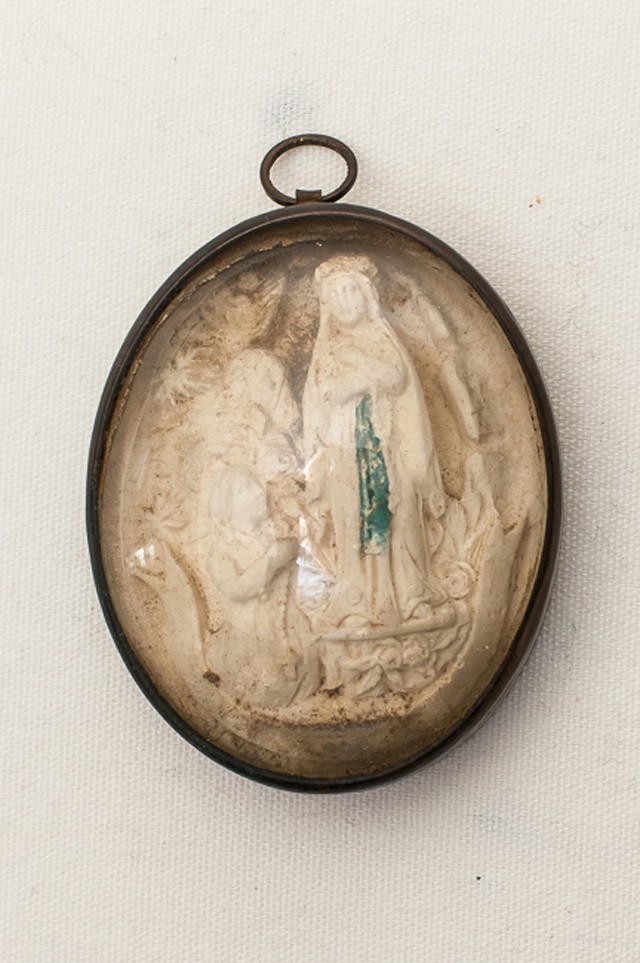
I often find relics haunting, and I like the fragile, almost hazy look of this late 1800s French relic pendant. A tiny relief of Mary has been carved out of meerschaum — a soft white mineral used for centuries to create carved pipes and, later, cigarette holders — and placed under convex glass. The glass heightens the three-dimensional appearance of the carving. The piece is set in brass.
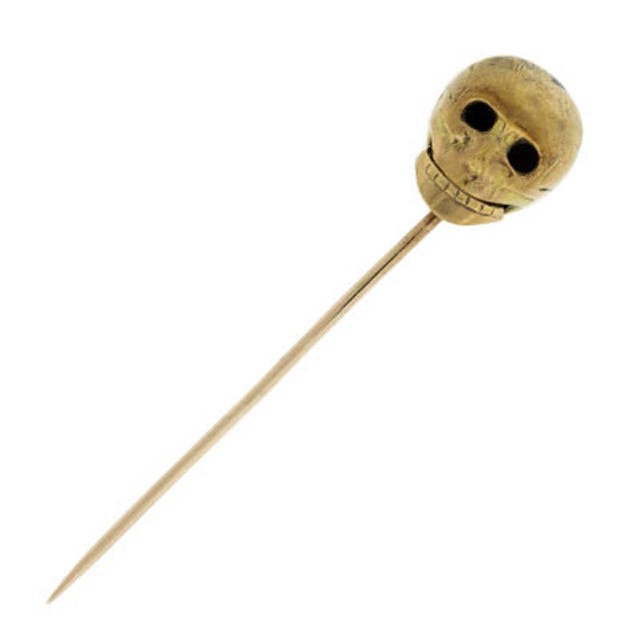
This 15k gold memento mori stickpin features a skull with a hinged jaw, allowing it to be opened or closed. The three-dimensional effect of a slightly raised nasal bone and individually etched teeth (not to mention the gaping eye sockets) should combine to make him creepy, but instead he’s kind of cute.
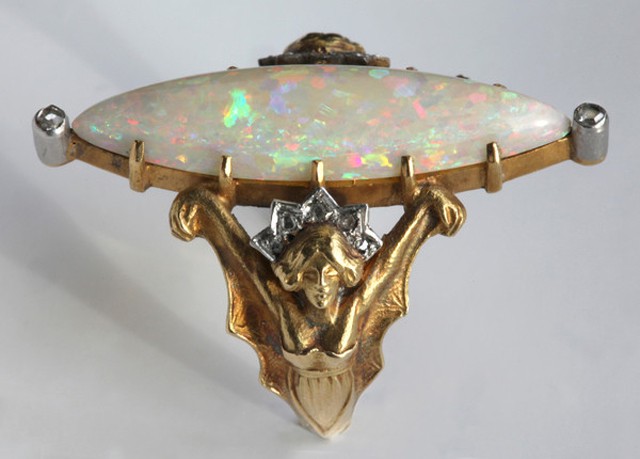
Circa 1900, this Art Nouveau “Bat Maiden” ring, by the French designer Charles Boutet de Monvel (1855–1913), features a glowing center opal flanked by two crowned and bat-winged female figures in gold with diamond accents.
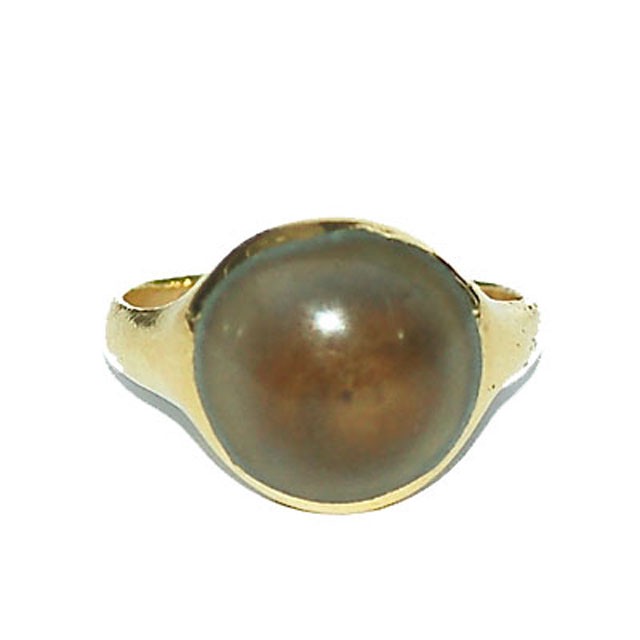
Toadstone is a fairly unattractive brownish-gray stone that was traditionally believed to come from the head of a living toad, but it’s actually a fossilized fish tooth. It was highly sought after for centuries for its so-called magical powers, which could apparently detect the presence of poison, cure snake bites, and treat kidney disease, epilepsy and various other ailments. Christopher J. Duffin, in a great article for Jewellery History Today (the magazine of the Society of Jewellery Historians), also quotes Albertus Magnus, a 13th-century Dominican friar from Cologne, and his recommendation that unmounted toadstones be swallowed — “to cleanse the bowels of filth and excrements” — and then later, uh, retrieved.
Toadstones were also believed to protect mothers from fairies, preventing them from stealing their children and replacing them with changelings.
How does one get a toadstone, you may ask? It’s easy: According to Edward Topsell’s The History of Four-Footed Beasts and Serpents from 1658, all you need to do is place a live toad on a red cloth, wait until it belches the stone out, and then quickly grab it before the toad snarfles it back up again. Piece of cake.
Toadstones were usually cut in smooth cabochon form and set into rings. This ring is circa 1700, and features a high karat gold setting. A very similar ring resides in the Victoria & Albert Museum, and 14 toadstones were also found in the Cheapside Hoard.
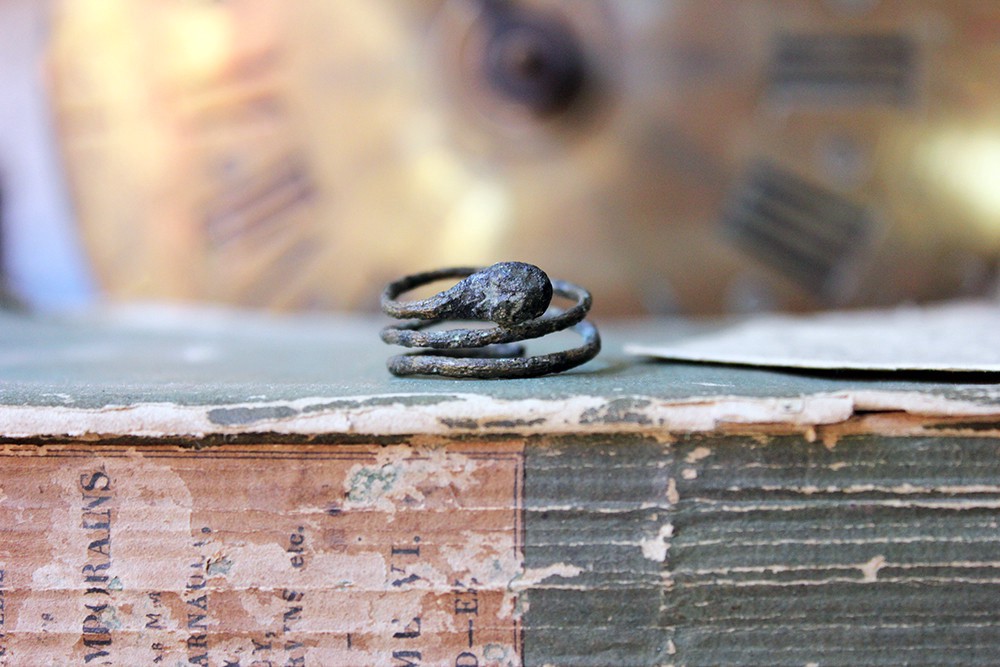
Circa 1200 B.C., this bronze ring originated in Luxor, Egypt. Depicting a sacred asp, it was excavated in the 19th century, and was formerly part of the Baron Amherst Collection (click through to the Doe & Hope site for more on the provenance and Amherst himself).
Snakes were both revered and feared in ancient Egypt, and they appear throughout their mythology and ornamentation. 1200 B.C. places the ring in the Twentieth Dynasty of Egypt, a period that featured general unrest and decline, as well as around 4000 pharaohs called Ramesses (well, just Ramesses III through XI). Actually, since we’re in a Halloween frame of mind, I should probably note that Ramesses III’s mummy, which was discovered in 1884, was the inspiration for Hollywood’s infamous film mummies.
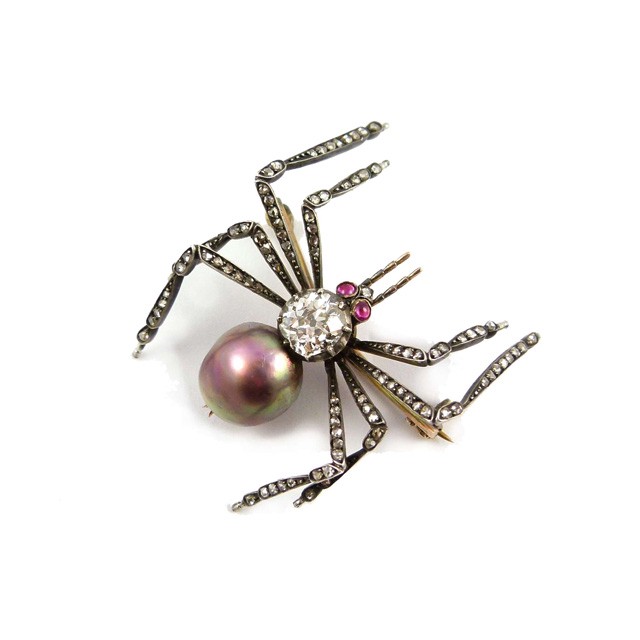
This creepy-crawly spider brooch, circa 1890, features a colored pearl body, cushion-cut diamond thorax, and cabochon ruby eyes. Rose-cut diamonds line the legs, and the piece is set in silver and gold.
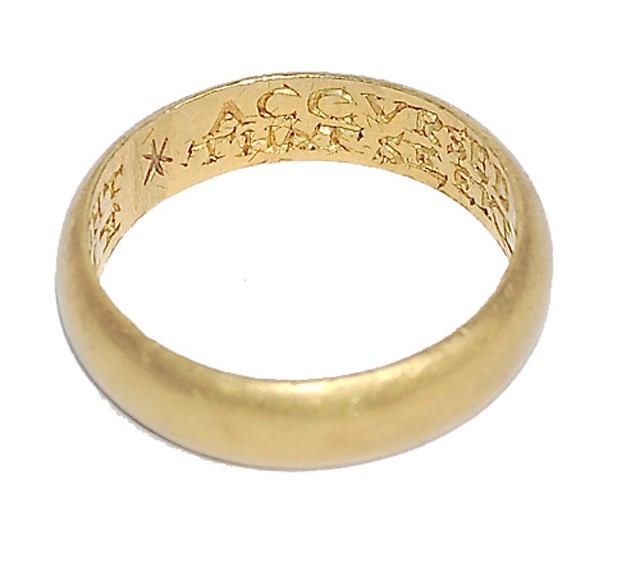
I’ve featured a posy ring in the past, but this one has an unusual and fierce motto. Circa 1620, it states: Accvrsed be that wicked wicht that seeke to robb me of my right (Accursed be that wicked witch that seeks to rob me of my right).
Posy rings were usually presented to loved ones with secret messages of love and devotion engraved inside, but in this case the hidden motto was protective. It was essentially a good luck charm, acting as a talisman against witchcraft and reassuring the wearer of protection against anyone who would seek to harm their union. It’s a fascinating and potent symbol of the widespread fear of witchcraft that existed in the 17th century.
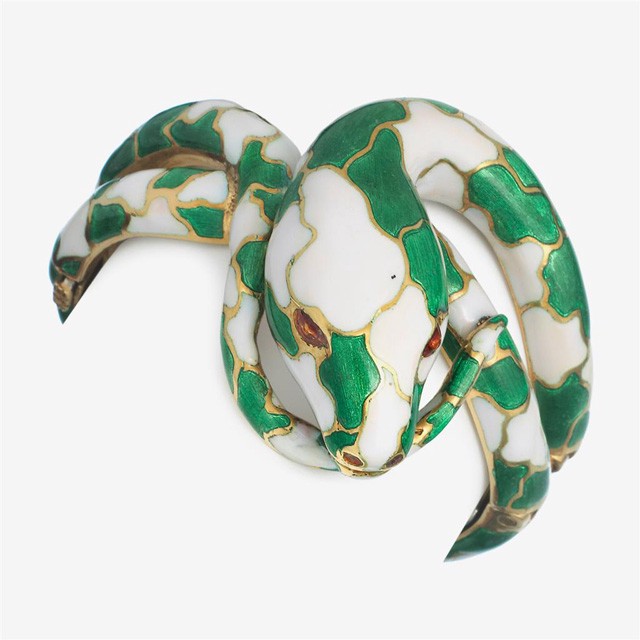
Snakes, as shown above, have been featured in jewelry for centuries — sometimes loaded with symbolism, and other times simply decorative. Whether you like them in real life or not, their sinuous form often results in some exceptionally beautiful designs. This bangle bracelet is one of them. From a Philadelphia estate and up for sale in Freeman’s November 3rd Jewelry & Watches auction, it coils around the wrist in 18k gold with green, white and red enamel.
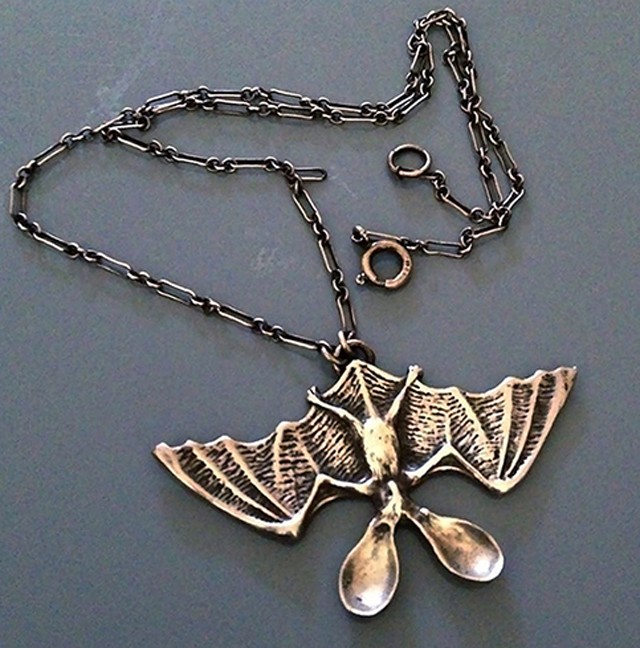
Circa the 1940s, a sterling silver winged bat pendant with endearingly huge ears.
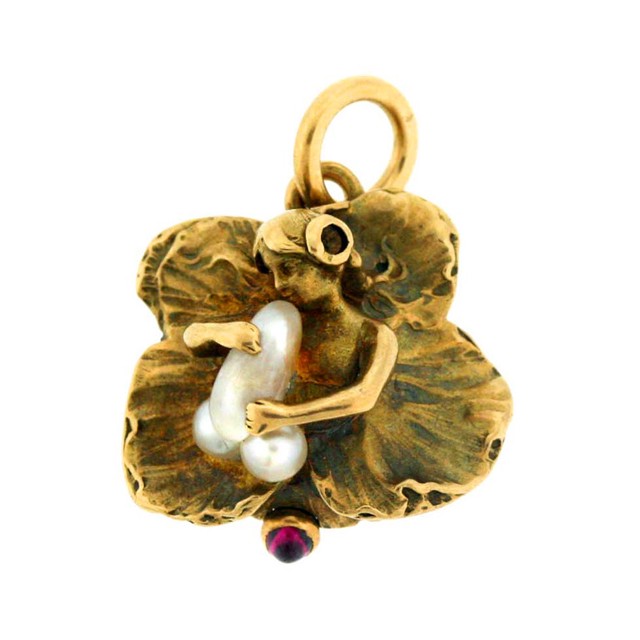
So, I don’t know, maybe this is like a version of The Ghost and Mrs. Muir, except instead of an attractive dead sea captain, we have a ghostly floating package? Circa 1900, this Art Nouveau “erotica” pendant features a woman embracing exactly what you think she’s embracing. The pendant (in gold with natural pearls and a small cabochon ruby) is also a locket, and may have been used to hold snuff.
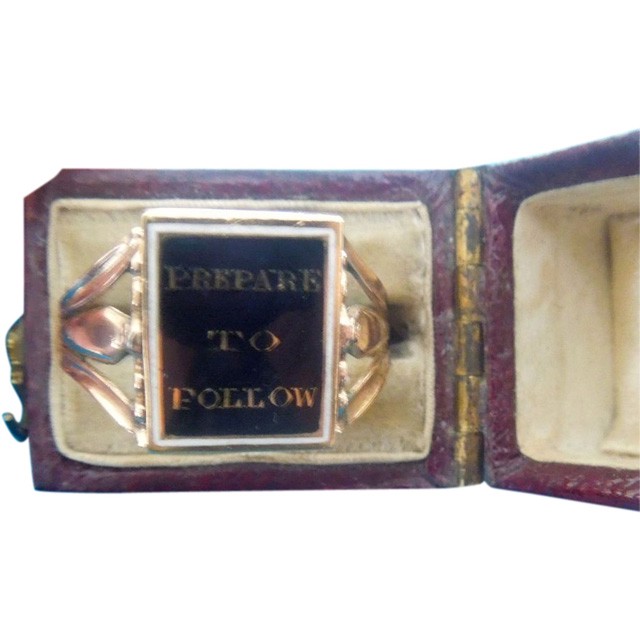
This mourning ring doesn’t mince words. In 18k gold with black and white enameling, it features a central panel that swivels, revealing a lock of braided gray hair under glass on one side, and the words “Prepare to Follow” on the other. The inscription engraved in the band states “Nath Hayward 0B 3rd Feb 1814 AET 73.”
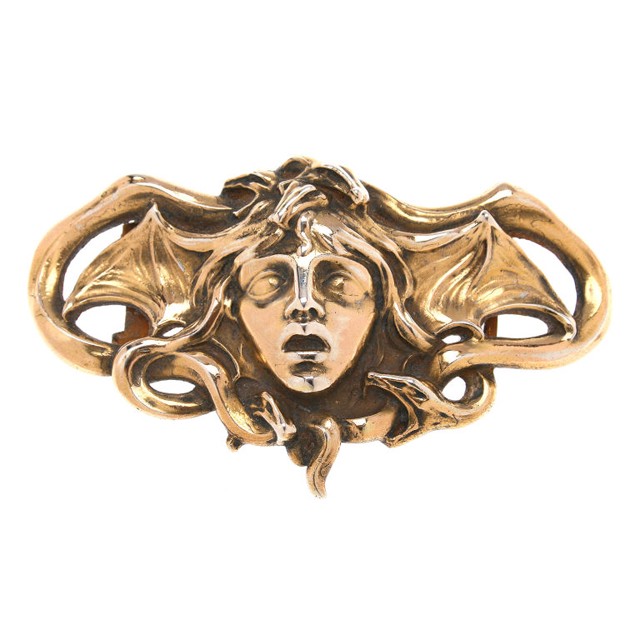
Depicting Medusa’s head on bat’s wings, this gilded silver Art Nouveau belt buckle was created by German designer Albert Holbein, and dates to circa 1900. According to the dealer, it’s a variation on another design that was shown at the Paris Exposition Universelle of 1900.
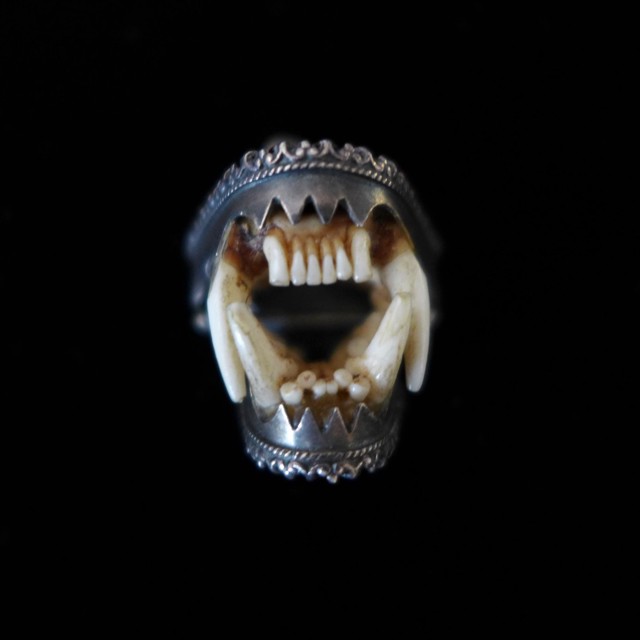
Another form of talisman, Bavarian “charivari” amulets were believed to protect and bring success to hunters. Wearing a charivari — traditionally hung from a chain attached to the hunter’s belt — was seen as a way to magically gain the attributes of the animal, making it easier to catch or kill. Gruesome, I know, but I can see how carrying a protective charm might be an appealing option when facing the forest alone.
Bits of antler, teeth, claws, the jawbones of small predators, and even the pincers of stag beetles were used in charivari pendants, and they’re still worn today as an accessory to traditional lederhosen. You can see some more examples here.
This charivari dates to around 1901–1909, and features the jaws of what was probably a weasel or a stoat. It’s set in German silver (which is not actually silver, but an alloy of copper, zinc and nickel), with an acorn and leaf detail on the top.
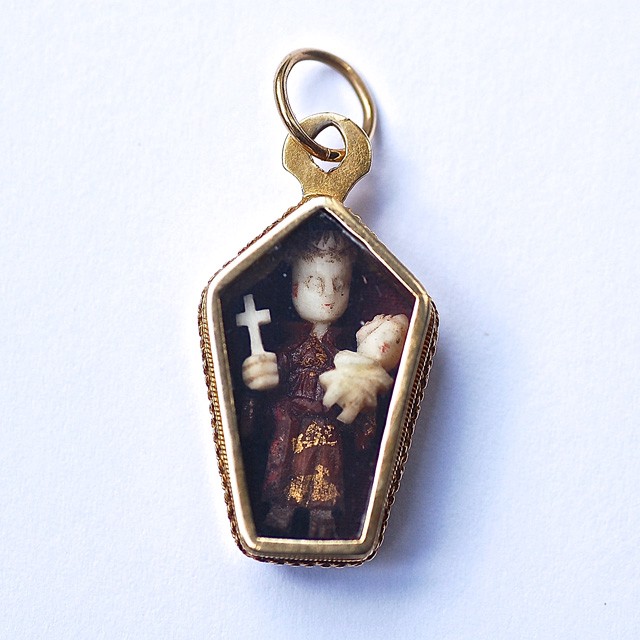
Another relic! This pendant is Portuguese, circa 1780. It’s made of carved boxwood and gold, and features a tiny figure of St. Anthony. The Catholic Church has always used symbols to identify saints, so this little guy can be identified as Anthony by his robes (he was a Franciscan friar) and the child in his arm, because he’s usually depicted as holding the baby Jesus. The coffin-shaped box is a nice little touch.
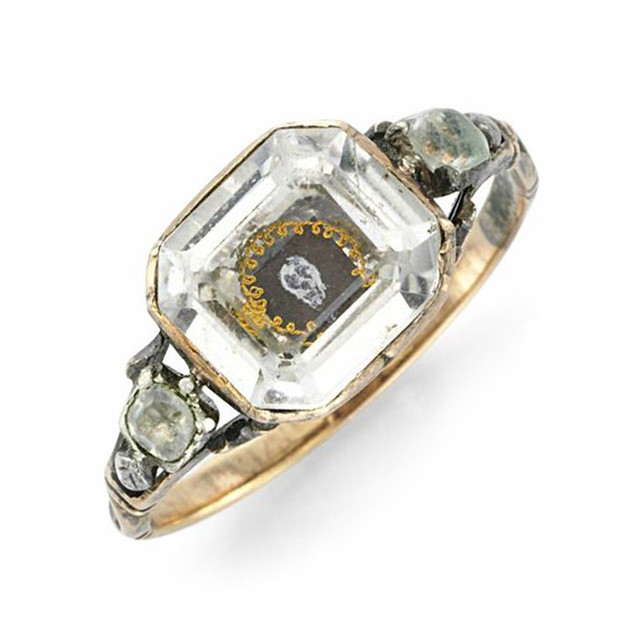
This 19th century memento mori ring showcases a tiny skull hovering beneath rock crystal — a constant reminder to the wearer of his or her mortality.
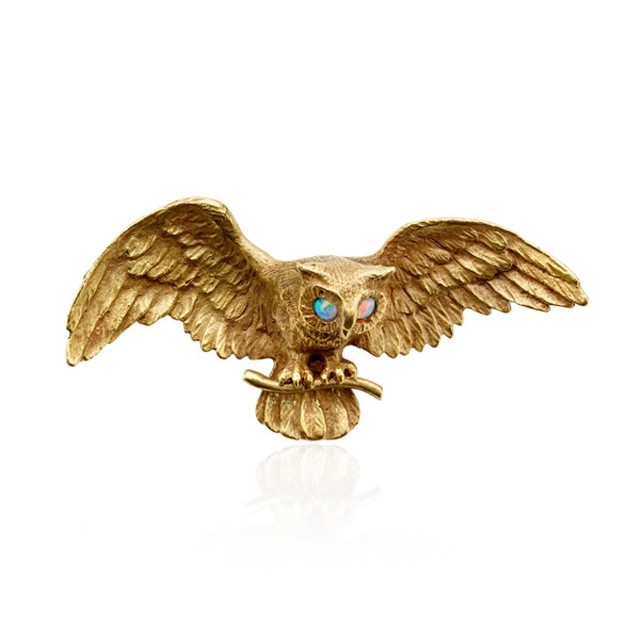
Circa 1900, a beautiful little 14k gold Art Nouveau owl pin, with opal eyes and outstretched wings.
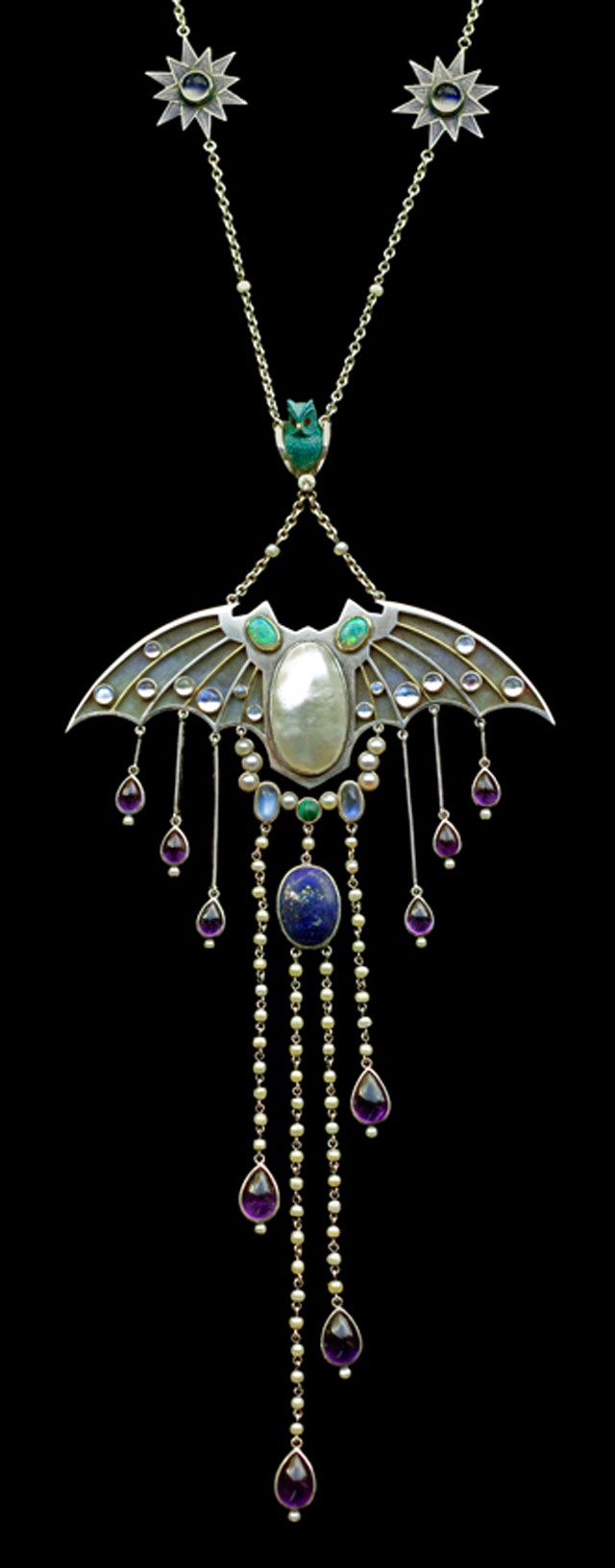
This piece is sold, but I’m including it because it’s beautiful and OMG THE TINY OWL. Circa 1910, it’s a Jugendstil — -a.k.a. German Art Nouveau — -silver and gold bat pendant, created in the style of designer Georg Kleemann (1863–1932). It is set with opal, moonstone, pearl, amethyst, lapis, turquoise, ruby and diamond, with touches of enamel. That owl!!!
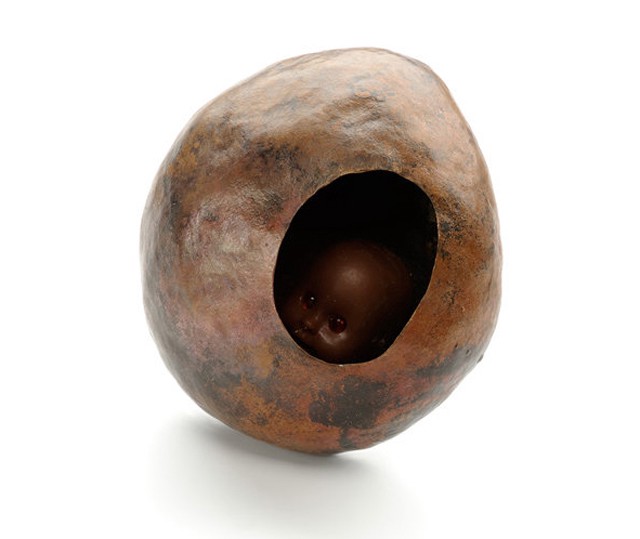
I saved the best for last! This is a contemporary brooch by Spanish designer Andrea Coderch Valor. Made of silver, copper, steel and a plastic doll, the piece is part of her aptly named “Hieronymous Bosch” collection. It will haunt your dreams. Enjoy!
Previously: Hippocampi, 18th Century Febreze, and a Circus You Can Wear
Monica McLaughlin tweets about ridiculous old jewelry and other random nonsense at @rococopacetic. She also wants to mention: If you’re in the New York area, don’t miss the new “Death Becomes Her: A Century of Mourning Attire” exhibit at the Metropolitan Museum of Art. The exhibit examines the development of mourning fashions and rituals through the 19th and 20th centuries, including clothing, jewelry and other accessories. Good stuff! The exhibit opened on October 21, and will run until February 1.